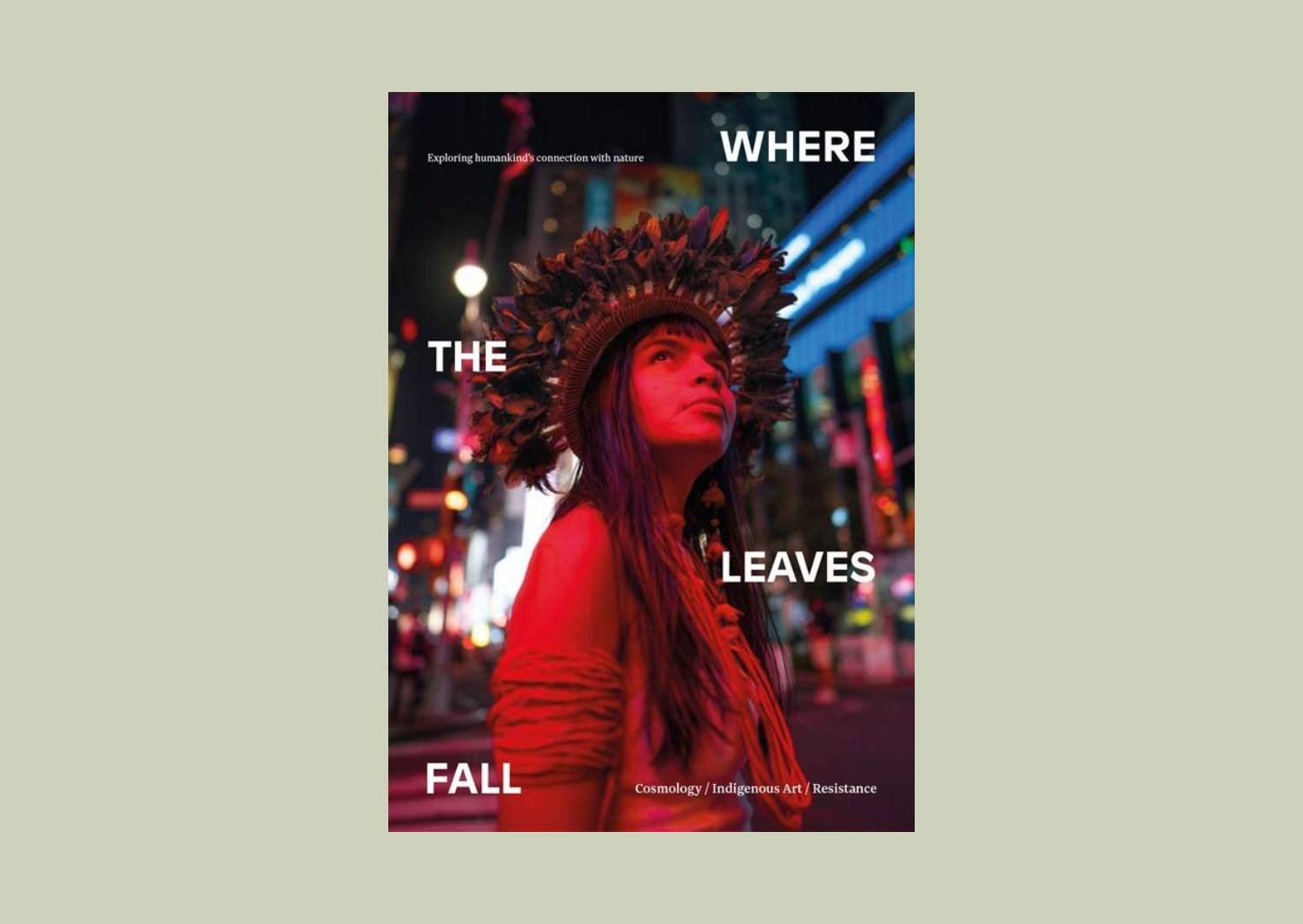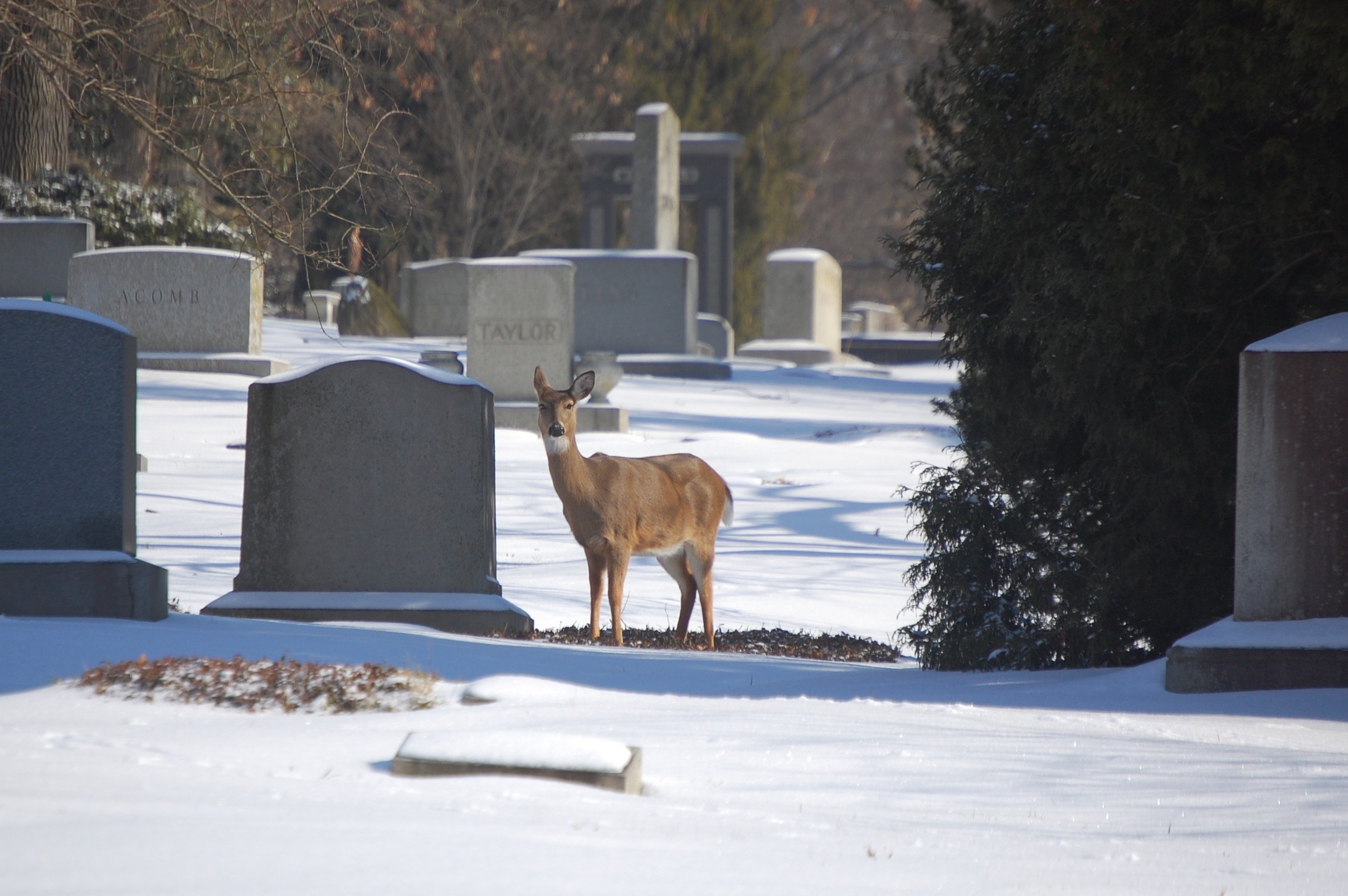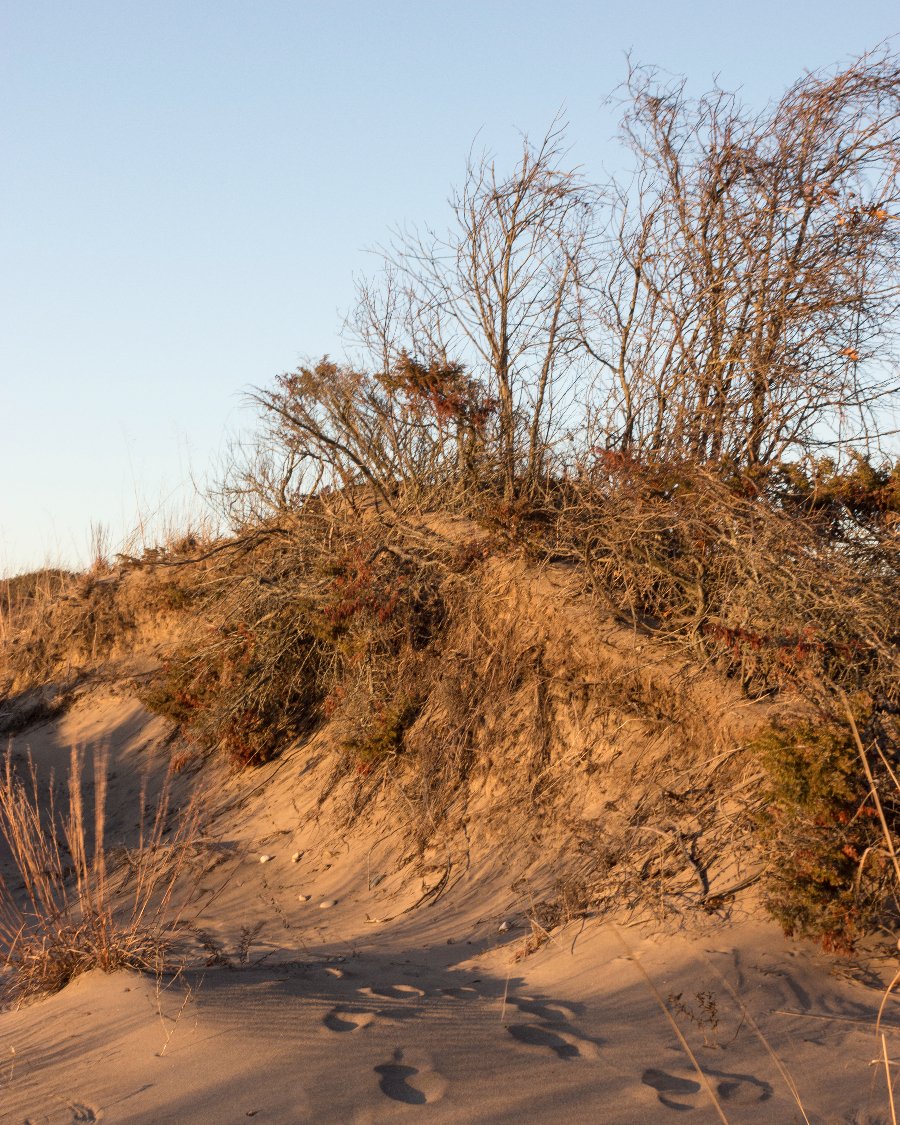By Eugene Navakas:
Winter:
Three mute swans live in this cemetery. We hear one before we see it. It flings itself forward against a stiff, stubborn sheet of surface ice, so fiercely, so indefatigably, that we wonder whether we should help. This is common winter behavior, our phones tell us, not to worry, but the force is so brutal and compulsive, the breast so soft and undefended, that we struggle to believe them. The swan’s face is unreadable. It makes no vocal sound. We’ve seen it in strange postures before⎯once, standing on the steps of a grand mausoleum, gazing into the tomb through a bronze veil of Arts-and-Crafts grape leaves, as if contemplating the past and future and all the world’s lost things⎯but it is, after all, an animal. There is a limit to our ability, however much we may refine it, to understand what it wants.
What we can do is walk. Every Saturday, for twelve months, with our boots we trace trails across 450 acres of hilly parkland devoted to the peculiar mix of feral nature and steady human memorialization. We aren’t the only ones. There are long, snaking funeral corteges for which we respectfully step aside and sometimes halt, arrested by a driving, rhythmic rumble leaking through the windows of a hatchback at the rear. There are joggers, whooshing past in suspended clouds of breath, cheeks flush with wind and cold and the heightened fluency of pounding, reliable hearts. There are even guided tours, groups of five or ten around a single, heavily bundled figure. Sharp mitten-dartings punctuate her recitation, before a familiarly grand mausoleum, about the Canteloupe King within. He grew rich, she says, by using refrigerated rail cars to ship Colorado melons nationwide.
Spring:
In March we turn and gasp at a great blue heron, portent of the coming profusion. It freezes at the lip of a pond, amid sunning turtles, and so do we. The turtles are red-eared sliders, the most popular pet turtles in the United States. They are also among the most damaging invasive species, outcompeting native turtles at great expense to ecosystem biodiversity and even human health, in the form of salmonella infection. The heron is a juvenile, more gently shaded than its maturer counterparts. Instead of blacks and whites, here suffuse more smoky blues and grays, fading as they extend from wing and impossibly sinuous neck to a long spearpoint of orange-bellied beak. The bird stares back at us, sidelong, from the black pit at the center of its banana-bright eye, then flaps up and out over green water⎯gliding, mouth open wide with seeming glee, until resettling, safer, on the far shore. The Eastern Redbuds show early signs of flower, but they’re barely intimations of the riotous, purple future.
Our asphalt path leads straight to May, beneath skies deep as ocean and the soaring, white-hulled wings of turkey vultures. Each branch, now, is fragrant color, sweet with bees. The Higan Cherries weep tears so cream they’re pink, so pink they’re cream, moody and intense as dreams. Around one bend, the stones themselves sprout flowers. Arcing, vibrant, lush cascades of custom, deeply felt bouquets⎯GRAMMY; a can of energy drink; a three-foot baseball; the wreathed photo-print of an ultrasound⎯dazzle gray- and red-granite monuments like stars. Thistles carved in sharp relief peek out behind the floral burst, below all-capped Scottish surnames. Each year, come Memorial Day, Scottish Travelers return to these stones, this parkland cemetery, to mourn and cherish their dead. If you search the digital record, you’ll find a contemptible archive of fear and bigotry, exoticized misunderstanding. An online business magazine tries to link the changing scope and luxury of the annual display to its own broad economic forecast. But if, for a moment, you breathe in the display yourself; if you pause, at respectful distance, on the trip back toward the sliders and the Weeping Cherries; you may feel a sharper, more familiar pang⎯something living, something lost.
Summer:
Summer is a season for the ears. What better place than a graveyard for hungry, roused life to fly shrieking from the ground? Here, specifically, over half a billion Brood X cicadas⎯roughly 1.5 million per acre⎯burrowed into the soil as fresh-hatched nymphs in 2004. For seventeen years, they fed on roots and tree sap less than a foot below the surface, until last week they tunneled up and out. The males broke through first, shedding skins and rapidly contracting tymbals, the clicking reverberators that, in chorus, sync into a jangly, hissing call loud as a motorcycle engine. The females heard that call, and now they’re everywhere. Pavement, grass, bushes, trees. Your car, your hair. Even the chocolate shop uptown, if you’re game for a crunch and can brave a mid-pandemic crowd. Their eyes are ladybugs, glossy red buttons with faint black spots for holes. Or at least that’s what we think their eyes are, until, much later, magnified, we spot the other three. Onscreen, inset like jewels on an igneous plain between submerged red moons, hides a tiny triangular trio. They’re called “ocelli,” simple eyes, and as far as we can see, they distinguish light from dark.
It’s funny how the greenest days, air thick with water, hot with sound, can also feel so full of death. In two short months, the cicadas will have come and gone, their seventeen-year regeneration restarted, today’s lively bodies in stacks like rotting blankets, warming future generations beneath the dirt. One of the most spectacular structures in these half-shorn, half-wild hills is a private Gothic Revival funerary monument built in 1870 in the style of Paris’s medieval Sainte-Chapelle. Its first interment was the English whiskey magnate whose fortune paid for its construction, as well as the transfer of his remains to marble catacombs eight years after initial burial in parts no longer known. On the second floor, above the crypts, sleeps a tall and narrow chapel twelve feet wide but thirty deep and thirty-four high⎯an austere, long-suffering space we’ll likely never see. While even on sweltering, swarming summer afternoons, the exterior remains a popular stage for professional photography, the heavy doors stay locked, the wrought-iron gates chained. Brides and grooms and Instagram influencers grin wide before the retreating flying buttresses of a family in disrepair. Just three Brood-X life-cycles after the building’s birth, the magnate’s granddaughter tried, and failed, to have it razed.
Fall:
It’s not hidden, but it takes a little looking to find the graves of Levi and Catherine Coffin, unmarked until 1902, when a memorial was erected in personal tribute by the city of Cincinnati’s Black population. During the forty-one years from their marriage to the end of the Civil War, the Coffins aided 3,000 enslaved people as they risked their lives in search of freedom. The Coffins’ home in Fountain City, Indiana became known as the Grand Central Station of the Underground Railroad. Levi himself was often called its President. The landmark we use to return to this quiet, shattering spot⎯just seven miles north of the Ohio River and the Mason-Dixon, the old, antebellum border⎯beckons only a few paces away. A fat, trunk-like branch radiates out like a sine wave from the base of a squat tree. It skims briefly above the trimmed, leaf-pocked grass, then dives, submerged, before again swooping back up. So much of Autumn feels between. Leaves turning, half-glorious, half-gone.
Our air comes quick, our tendons groan, as we lean ahead into the circuit’s final stretch. The trees buoy us⎯great oaks and beeches; sycamores; maples; a prodigious, solitary September elm, a national champion⎯as if a god would compete. Pixelated crests of red and orange, green and yellow, each shade just slightly tilted off of true, draw up our eyes to the spotlit, golden-hour sunbursts of hunting hawks. Closer to our feet, a labored scurry. A groundhog galumphs through underbrush and disappears. A frog’s twin bulbs peep up like periscopes above a dollhouse sea, then quickly dive and vanish. Around a corner, flustered scrabbling from a bewildered flock of spindle-legged turkeys, surprised from their leisure beneath the awning of a portable funeral tent. A mermaid rises from a harp atop a bed of kelp and conch and a guardian ring of dolphins. Louisa Lawson fished her out from marble in 1887. Now she decorates the tomb of the world’s once-largest manufacturer of architectural sheet metal. In the end, however, we return to the swans⎯which today, though on opposite sides, all share the same turbid, algal pool. There’s a kind of paradox to writing through the seasons. A temptation to squeeze shape from a cycle that never stops. We turn away and keep walking.
***
Eugene Navakas is a lit. Ph.D. turned TV writer who splits time between Oxford, Ohio and Los Angeles, California. His 2020 crime drama pilot script GALAPAGOS, TEXAS was recognized on Kyle's List here, and his dramedy pilot script EXPECTATIONS won the 2016 UCLA Extension TV Pilot Writing Competition. He also updated and co-performed a 19th-c. folk song about coral, which was featured on a podcast hosted by the Newberry Library in conjunction with his wife's academic environmental research here.











